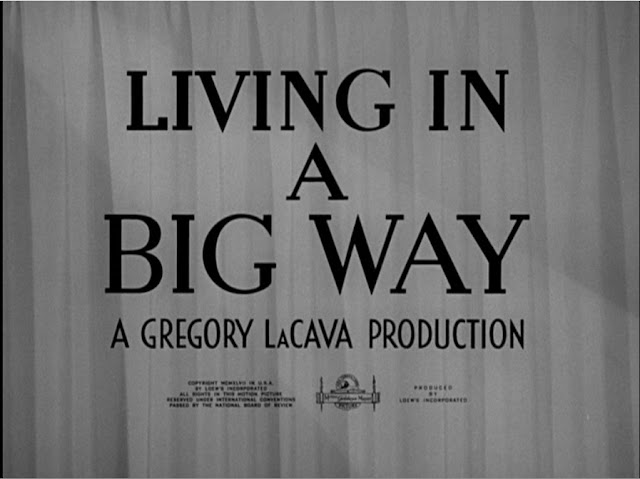Living in a Big Way
If viewers today are aware of Living in a Big Way (MGM), it's like to be as a failed, or at least third-tier, MGM musical. Part Gene Kelly/Stanley Donen dance-musical, part Gregory LaCava-directed romantic comedy, the film's production values and genre hybridity keep it out of the musical canon. The reviews at IMDB are instructive in this regard.
To me, the mix of generic material and the aspirations for thematic seriousness are precisely what interests me in the film. The opening title sets up the tongue-in-cheek tone.
What I was not prepared for is how the statement works as commentary: Living in a Big Way is a social problem comedy. To begin with, the film uses a screwball divorce-comedy premise to reflect on the issue of postwar divorce and failing "war marriages" - in a manner not dissimilar to Suddenly, It's Spring. On top of this, the Dinner at Eight-ish madcap quality sends up the industrialist classes and makes digs at war profiteering.
Finally, there's a plot line about building housing developments for veterans and their families, and even the musical numbers have a Mr. Blandings quality.
So, as with so many of the 1947 films, Golden Age genre formulas get reworked and recoded into an invocation of the new, both in direct thematic commentary on the postwar moment and in the ideological break with the prewar. Fitting, then, the housing development centers around what I'm quickly discovering is the quintessential MGM icon: the Victorian house. It serves both as a nostalgic marker for small town family life and for the aesthetic idiom that has to be renovated and reconfigured for a modern age.





Comments